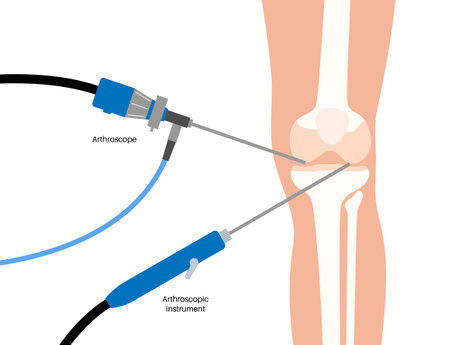1. Introduction to Simulation and Role Play in Skill-Building
Simulation and role play are interactive, hands-on teaching methods that make learning real-world daily living skills both practical and fun. In the United States, these approaches are especially helpful for people of all ages who need to master important life skills for greater independence. Rather than just reading about how to pay bills, shop for groceries, or communicate with others, learners actually get to practice these skills in safe, realistic settings.
Why Use Simulation and Role Play?
Learning by doing helps people remember information better and feel more confident when faced with similar situations in real life. For example, practicing how to order food at a restaurant or how to use public transportation prepares individuals for everyday experiences they might encounter in American communities. Simulation and role play allow participants to make mistakes, ask questions, and try again without real-world consequences.
Common Daily Living Skills Taught Through Simulation and Role Play
| Skill Area | Real-Life Examples in the US |
|---|---|
| Money Management | Using ATMs, budgeting for groceries, paying bills online |
| Communication | Ordering food at a fast-food drive-thru, making a doctor’s appointment by phone |
| Transportation | Reading bus schedules, using ride-sharing apps like Uber or Lyft |
| Home Skills | Laundry routines, simple meal preparation, cleaning checklists |
| Community Participation | Shopping at local stores, mailing a letter at the post office |
The Benefits of Hands-On Learning
In the U.S., where independence is highly valued, simulation and role play help bridge the gap between knowing what to do and actually doing it. These methods build confidence and foster problem-solving skills that can be used in everyday American life. By practicing real scenarios, learners become better prepared for challenges they may face outside of the classroom or therapy session.
Identifying Key Daily Living Skills
Before using simulation and role play as teaching tools, its important to know which daily living skills are most essential for independent living. These skills help people handle real-world situations confidently and safely. Let’s look at some of the most critical areas:
Money Management
Being able to manage money is a vital skill for everyone. This includes creating a budget, understanding bills, knowing how to use a debit card, and recognizing different coins and bills. Practicing these through role play helps learners get comfortable with everyday transactions like paying for groceries or splitting a restaurant bill.
Common Money Management Tasks
| Task | Real-World Example |
|---|---|
| Making a Budget | Planning weekly expenses like rent, food, and transportation |
| Paying Bills | Using online banking to pay electricity or phone bills |
| Shopping | Checking prices and calculating total cost while shopping for groceries |
| Handling Change | Receiving the correct change after cash purchases at a store |
Grocery Shopping Skills
Going grocery shopping covers many daily living skills in one activity. Learners need to make a shopping list, compare prices, find items in the store, and interact with cashiers. Simulation can recreate this experience so learners feel more confident when doing it on their own.
Steps in Grocery Shopping Role Play
- Create a simple grocery list based on weekly meals
- Use flyers or online apps to compare prices and deals
- Navigating aisles to find products in a mock or real store setting
- Packing bags and handling payment at checkout
Using Public Transportation
Navigating buses, subways, or rideshares is key for independence in most American communities. Learners should practice reading schedules, paying fares, planning routes, and following safety rules. Simulation can include practicing with real maps or using transit apps common in the U.S., like Google Maps or local transit authority apps.
Essential Transit Skills Table
| Skill | Description |
|---|---|
| Reading Schedules | Understanding bus/train timetables and planning trips accordingly |
| Paying Fares | Using cash, cards, or mobile apps to pay for rides (e.g., MetroCard, Apple Pay) |
| Navigating Routes | Selecting the best route using transit maps or apps like Google Maps or Moovit |
| Safety Awareness | Knowing what to do if lost or if there is an emergency on public transport |
Navigating Healthcare Services
Being able to access healthcare services is crucial for maintaining health and well-being. People need to know how to schedule appointments, fill out basic forms, talk with healthcare providers, and understand prescriptions. Through role play, learners can practice calling clinics, describing symptoms, and handling pharmacy visits just like they would in real life.
Healthcare Navigation Practice Ideas:
- Scripting phone calls to schedule doctor’s appointments
- Filling out patient information forms
- Pretending to pick up medication at a pharmacy
- Explaining symptoms clearly to a provider
By focusing on these key areas—money management, grocery shopping, using public transportation, and navigating healthcare—simulation and role play can give learners practical experience that prepares them for everyday life challenges.

3. Designing Realistic Simulations and Scenarios
When teaching daily living skills through simulation and role play, its important to create scenarios that feel real and relevant. For learners in the United States, this means designing activities that reflect everyday American routines and experiences. By using familiar settings and situations, you help participants build confidence for real-world challenges.
Why Cultural Relevance Matters
Simulations are most effective when they match the cultural context of the learners. For example, practicing how to order food at an American fast-food restaurant or navigating a trip to the DMV (Department of Motor Vehicles) can make the learning process more meaningful. This approach helps learners understand not just what to do, but also how things are usually done in the U.S.
Steps to Create Realistic Scenarios
- Identify Common Daily Tasks: Start by listing activities that people regularly encounter in American life—like grocery shopping, job interviews, using public transportation, or visiting a doctor’s office.
- Gather Details: Include realistic elements such as forms, typical dialogue, wait times, and setting-specific challenges. For example, at the DMV, prepare mock forms and practice waiting in line.
- Role Assignments: Assign roles based on real-life interactions—such as customer and cashier, interviewer and applicant, or patient and nurse.
- Cultural Nuances: Incorporate common phrases, etiquette, and body language used in the U.S., like greeting someone with a handshake during an interview or saying “excuse me” in crowded spaces.
Example Scenarios for Role Play
| Scenario | Description | Key Skills Practiced |
|---|---|---|
| Trip to the DMV | Learner practices filling out forms, waiting their turn, answering questions from staff, and handling documentation | Punctuality, paperwork accuracy, polite communication |
| Job Interview | Learner prepares a resume, dresses appropriately, answers interview questions, and follows up after the meeting | Professional communication, self-presentation, interviewing etiquette |
| Grocery Shopping | Learner makes a shopping list, interacts with store staff, uses self-checkout or cashier lanes, manages payment methods | Budgeting, product selection, social interaction |
| Doctors Appointment | Learner schedules an appointment by phone or online, fills out medical forms, discusses symptoms with a healthcare provider | Scheduling skills, health vocabulary, personal advocacy |
Tips for Authentic Learning Experiences
- Use Real Materials: Provide learners with actual forms or items they might use in these scenarios.
- Create Realistic Environments: Set up classrooms or practice spaces to look like real-world locations (e.g., arrange chairs to mimic a waiting room).
- Practice Problem-Solving: Introduce unexpected challenges (like missing documents at the DMV) so learners can practice staying calm and finding solutions.
- Encourage Reflection: After each simulation, discuss what went well and what could be improved for next time.
4. Facilitating and Debriefing Role Play Activities
Effective Techniques for Guiding Participants Through Simulations
When teaching real-world daily living skills through simulation and role play, it’s important to create a supportive and engaging environment. Start by clearly explaining the scenario and the goals of the activity. Make sure everyone understands their roles and what is expected. Use simple language and give step-by-step instructions so participants feel comfortable and confident.
Tips for Facilitators
| Technique | Description |
|---|---|
| Set Clear Expectations | Explain objectives, rules, and desired outcomes before starting. |
| Model Behavior | Demonstrate the skill or scenario first so participants know what success looks like. |
| Encourage Questions | Create an open space where participants feel safe to ask for clarification. |
| Give Constructive Feedback | Offer supportive suggestions during and after the activity to reinforce learning. |
Encouraging Active Participation
Active participation makes simulations more effective. Encourage everyone to get involved by assigning different roles or rotating tasks. Use positive reinforcement such as praise or small rewards to motivate engagement. If someone seems shy or hesitant, gently encourage them and remind them that it’s okay to make mistakes—that’s how we learn!
Ways to Boost Engagement
- Use real-life props like grocery items, bus schedules, or money to make scenarios relatable.
- Create teams for group activities to foster teamwork and peer support.
- Add a time limit to simulate real-world pressure in a fun way.
- Let participants suggest scenarios they find challenging in daily life.
Conducting Debrief Sessions
The debrief session is where most of the learning happens. After the role play, gather everyone together and ask open-ended questions about what they experienced. Focus on what went well, what was challenging, and what could be done differently next time. Encourage self-reflection as well as feedback from peers. This helps participants connect the activity to their own lives and reinforces new skills.
Debrief Questions Examples
| Question Type | Sample Questions |
|---|---|
| Reflection | “How did you feel during the activity?” “What surprised you?” |
| Skill Building | “What strategies helped you succeed?” “What would you try differently next time?” |
| Application | “How can you use this skill at home or in your community?” |
Reinforcing Skill Acquisition
Praise progress, celebrate small wins, and revisit scenarios over time to help skills stick. Encourage practicing these skills outside of class—like at home or out in the community—to build confidence and independence. Remember, learning daily living skills is a journey, and every step forward counts!
5. Assessing Progress and Real-World Application
Tracking Participant Progress
When teaching real-world daily living skills through simulation and role play, it’s important to track each participant’s progress. Keeping things clear and simple helps everyone stay on the same page. Below is a table showing common methods used in American settings to monitor growth:
| Method | Description | Example |
|---|---|---|
| Checklists | Step-by-step lists for specific tasks | Laundry checklist: sorting, washing, drying, folding clothes |
| Observation Notes | Instructor records what they see during simulations | Notes on how a participant handles grocery shopping role play |
| Self-Assessments | Participants reflect on their own performance | Rating confidence after practicing making a doctor’s appointment call |
| Peer Feedback | Group members give feedback to each other | Telling a classmate what they did well during a cooking simulation |
| Video Reviews | Watching recordings of simulations together to spot areas for improvement | Reviewing a video of using public transportation for the first time |
Providing Meaningful Feedback
Feedback is most helpful when it is specific, supportive, and timely. Instructors in the U.S. often use “sandwich feedback” – starting with something positive, sharing an area for improvement, then ending with encouragement. For example: “You did a great job organizing your shopping list! Next time, try to ask the cashier for help if you can’t find something. You’re getting more confident every week!” This approach helps participants feel motivated while also knowing what to work on next.
Supporting Skill Transfer to Real Life
The main goal is for participants to use these new skills outside of the classroom or simulation environment. Here are some ways American instructors help bridge the gap:
- Community Outings: Taking field trips to local grocery stores, banks, or bus stops so participants can practice skills in real settings.
- Homework Assignments: Giving small tasks to do at home, like making a meal or managing a budget with family support.
- Role Models and Mentors: Pairing learners with community volunteers who demonstrate everyday life skills.
- Family Involvement: Encouraging parents or caregivers to reinforce skills at home by practicing together.
- Cultural Relevance: Using scenarios that reflect American routines (e.g., tipping at restaurants, using American currency, navigating U.S. healthcare).
- Follow-Up Discussions: Checking in after real-life practice sessions to talk about what went well and what could be improved next time.
Sample Progress Tracking Table for Daily Living Skills Program in the U.S.
| Name | Date | Task Practiced | Simulation Score (1-5) | Real-Life Practice Score (1-5) | Instructor Notes |
|---|---|---|---|---|---|
| Amanda B. | June 1st | Laundry | 4 | 3 | Nailed sorting colors; needs more practice with dryer settings. |
| Carlos M. | June 1st | Banks/ATM Use | 5 | 4 | Trouble remembering PIN in public but asked for help appropriately. |
The Key: Consistency and Encouragement
The best results come from regular practice, open communication, and lots of encouragement. By tracking progress and providing feedback tailored to each person’s needs, instructors can help participants turn simulated lessons into real-life independence within their American communities.


